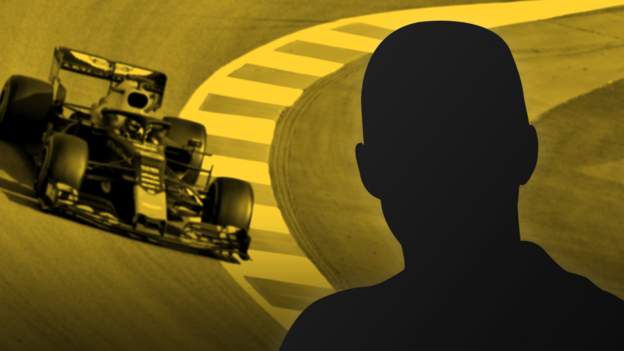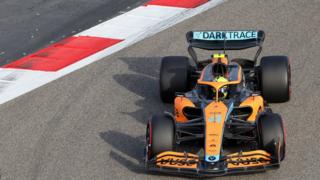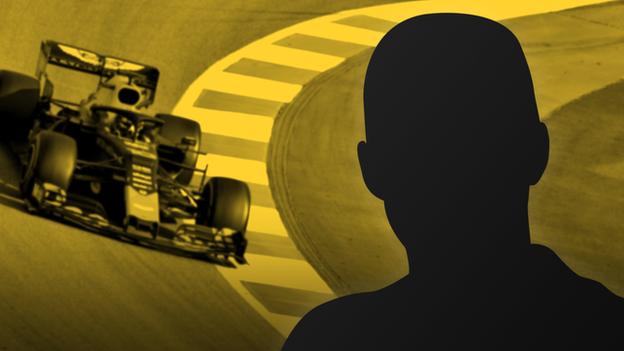
The Formula 1 cars that start the new season in Bahrain this weekend represent the biggest year-on-year change for 40 years – and possibly ever.
Aerodynamicists in the F1 teams – such as myself – have been working on their designs on and off since 2019, and this weekend represents a time of extreme anxiousness and high excitement as we find out for the first time how well we have interpreted the new rules.
To the untrained eye, the cars may not look that different from those that ended the 2021 season. But in fact the rule book has been thrown out and the regulations started again from scratch.
The shape of almost every part of the car has changed. Not only that, but there is a bigger visual difference between the cars from the various teams than there has been for some time.
I work as a senior aerodynamicist in an F1 team, and this article is intended to guide you through what’s changed and why, plus the key areas that will decide who is quick and who’s not.
Why have the changes been made?
The rules have been five years in the making, and they are the first to be based on extensive research from within F1 aimed at changing the way the cars interact with each other.
F1 saw that the biggest problem with the last generation of cars was that they struggled to follow each other closely, which made overtaking extremely difficult.
There were a number of reasons for this, but in terms of car design the key issue was the way the aerodynamics worked.
The intention of the new rules is to force us in a direction which the regulators deem stylistically pleasing, and which they also believe will lead to better racing.
What was the problem before?
When an F1 car drives round the track it creates what is known as a wake.
This is a bit like the water left behind a boat as it travels along, but as it is in air you can’t see it.
The air in the wake is churning and turbulent. But an F1 car needs clean airflow for its aerodynamics to work at their optimum and create the prodigious amounts of downforce that allow them to perform so highly.
In the past, when one car got close behind another, the wake from the lead car reduced the downforce the following car could generate, so it struggled to maintain its speed through the corners. This made close racing and overtaking very difficult.
The main reason for this was something called outwash. To make their cars work as well as possible, designers tried to push outwards the wake created by the front wheels so that it didn’t go over their own car and lose performance.
The consequence, though, was that it came back just behind their car and washed over any car close behind.
How will the new rules fix this?
The idea with the new regulations is to try to stop us outwashing the airflow. Instead, the new rules try to encourage more of an upwashing airflow.
Essentially, they are trying to throw all the wake up in the air so that it goes over the top of the car behind.
The team at F1 and the FIA have done studies which show an impressive reduction in the amount of wake that the following car experiences.
The theoretical figures look promising. A 2019 car lost 43% of its downforce when it was one car length behind another car. By contrast, a 2022 car should lose only 15%. At two car lengths, it should lose only 8%, compared with 24% for a 2019 car.
How has this been done?
This is without doubt the biggest rules overhaul I have ever worked on, and many believe it could well be the biggest in F1’s history.
You have to go back 40 years, to the winter of 1982-83, to find a change as deep-rooted as this. And ironically, the changes that have been made are in some respect a reverse of what happened back then.
That winter, rule makers outlawed an aerodynamic design approach known as ‘ground effect’ because they feared the cars were getting too fast.
Ground effect uses shaped tunnels – like an upturned aeroplane wing – to accelerate the air under the car. It is squeezed through the gap between the track and the car, exploiting what is known as the ‘venturi effect’. This creates a low-pressure area which sucks the car towards the track.
From 1983 until last year, F1 cars have had flat undersides between the front and rear wheels. But the rule makers have gone back to ground effect because they believe it will be effective in allowing cars to keep hold of a far greater proportion of their downforce when behind another car.
So, for this year, underbodies are shaped again, as part of a wholesale change of philosophy which has also reduced the importance of the front wing in generating the airflow patterns that define the performance of the car.
The most obvious differences between a 2021 car and a 2022 car are as follows:
- Under-floors shaped like a wing – known as venturi tunnels – with much larger inlets and outlets
- Simpler front wings that merge into the side of new, much lower noses
- Rear wings that wrap around into more sculpted end-plates
- Bigger, 18-inch wheels, with pre-defined deflectors fitted around them
- Removal of the complex components in front of the floor and side-pods
Will it work?
Theory is one thing. Reality may be another. We will not know how well the new cars perform in relation to the theory until they compete together, and it will take a few races before a proper picture can be seen.
On top of that, it remains to be seen how well Pirelli has succeeded in creating tyres that are less sensitive to overheating – a major problem with the previous generation of tyres, which was a large contributor to the difficulty in overtaking.
As far as the cars go, one concern I have is that all the extra upwash the cars now generate behind them could potentially ‘unload’ the front wing of the following car – ie, stop it working so well.
Losing front downforce like that would make it more difficult for drivers to turn the cars into corners, and could undo some of the progress these regulations might make.
The key performance differentiators

Diffusers and beam wings
Because the underfloors now generate so much more of the overall downforce of the cars, this will inevitably be an area where development is focused, and a lot of performance is found.
If you can exploit the venturi effect well under the whole of your car, then that is a lot of downforce.
The floors on these cars are dominated by much larger diffusers. At the back of the car, these draw all the air needed to get the venturi effect working.
Last year, teams were allowed to have vanes in the diffuser to turn the air in directions that aided performance. These are no longer allowed. Instead, the diffusers are now supported by a much bigger ‘beam wing’ – the aerodynamic element at the bottom of the rear wing.
You can now use two substantial beam wing elements, rather than just the little flaps allowed last year.
Both these changes will have the effect of reducing our ability to outwash the air coming out from under the car, but will support upwards expansion, supporting the diffuser in doing its job of pulling air under the floor.
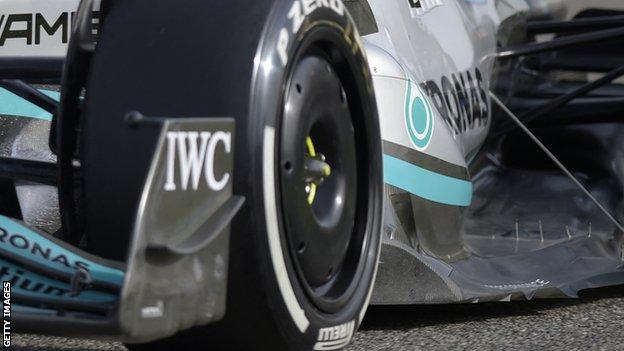
Floor edges
The edges of the floor drop slightly along the length of the car, to help seal off the tunnels from air outside.
This is crucial to the venturi effect, as any air coming in from the side slows down the air that is upstream of it – think of it like someone cutting in front of you in a queue. So to maximise downforce on a ground-effect car, we want to do everything we can to seal the edges of the floor.
One way is to physically close up the gap by running the cars as low to the ground as possible. However, this can present some problems – such as “porpoising”, which has been much talked about since pre-season testing started.
This is where the cars bounce up and down at high speed on long straights. It is typically a result of high levels of downforce sucking a car down on to the road.
The cars get lower and lower, right up until the point where the air can’t be worked any harder and part of the floor ‘stalls’. This sudden loss of downforce pops the car back up, at which point the aerodynamics start working and the whole cycle begins again.
We can also try to seal the floor aerodynamically, by using airflow to block off the remaining distance between the edge of the floor and the track.
This is done using something called vortices, which are like little tornadoes, spinning tubes of air which form when air crosses a sharp edge as it travels from an area of high pressure to an area of low pressure, just as we have at the sides of the floor.
If you look at the floor edges of these new F1 cars, you will see a lot of detailing – waves, cuts, lumps and so on.
These are all about trying to generate vortices that are strong enough to do the job of sealing the floor, and trying to form them as far upstream as possible – the sooner they start, the better the seal.
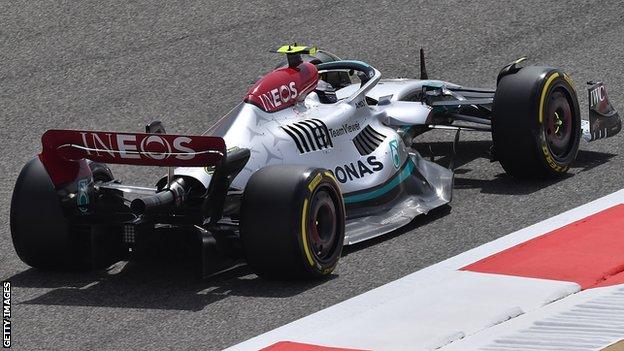
Sidepods
Strong vortices need to be fed nice, clean air to work properly and that is what is driving a lot of the decisions on the sidepods, an area where we see a number of different approaches from one team to another.
How you shape the bodywork dictates where you can feed clean airflow to, and also where you draw it from.
Some teams, such as Mercedes and McLaren, appear to be doing something called downwashing with their sidepods. In side view, their bodywork sweeps downwards from the sidepod inlet towards their floor quite aggressively.
This means they are trying to draw clean air from above and direct it down to the floor edge early.
Mercedes took this to an extreme with the super-slim design they brought to the second test.
Key to their concept appears to be the winglet in front of the bodywork, which has a series of smaller winglets on the top surface, and which also supports the mirror. These components all work together such that they set up a large scale rotation of the air, heading downwards at the centre of the car, then outwards down low towards the floor edge.
You can see from the slope of the Mercedes bodywork that it is sympathetic to this air flowing down towards the edge of the floor.
The extremely narrow width also keeps the bodywork as far away from the front wheel wake as possible. This should help to prevent the wheel wake from attaching to the bodywork and then staying with it all the way down the car, spoiling the flow to our carefully designed floor and rear corner.
One potential problem with downwashing very hard, very early on, is that you tend to pull the upper wheel wake in from above, which then heads towards the rear corner of the car. So, to some extent you feed clean flow to the front but at the expense of the rear.
Red Bull, by contrast, have gone for a very aggressive undercut on sidepods that are wider at the top. This will initially feed the floor edge with air that has gone underneath the sidepod. They then sweep down later on, sending more clean air from above towards the rear corner.
Ferrari have yet another solution with what some people are calling their “baby bath” concept – a scalloped cutout in the top of the sidepods.
The interaction with the front wheel wake will have been a significant consideration in this design. The high pressure from the very flat sides will push the wheel wake out, away from the floor, as well as driving strong floor-edge vortices, before the air over the concave, upper surface is delivered to the rear of the car.
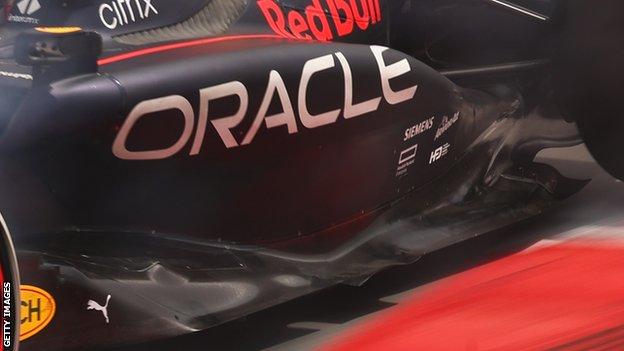
Mini floor wings
There is also lots of variation in the floor edges themselves. What each team has ended up with will, to a large extent, be a result of the decisions they have already made on their sidepods. On the whole, they are all trying to achieve the same thing – strong coherent vortices.
One interesting difference in approach, though, relates to a part called the ‘floor-edge wing’. The intention of the rules was to allow for components such as the winglets seen on the floor edge on last year’s cars, and that is the approach taken by some of the teams.
However, there is nothing to say that these wings must be positioned above the floor. And in fact some teams – Mercedes, Red Bull and Ferrari included – have decided to place theirs under the floor. From there, they can generate strong, floor-sealing vortices.
This is what some of the more bulbous lumps and bumps at the back of their floors are hiding.
They might not be very easy to spot, but I’ve seen the spy shots from the long lens cameras and they’re definitely there!
Plenty of variation
These are just a few examples of some of the problems we are trying to solve when designing an F1 car. In reality, there are endless other considerations and no one decision in isolation makes a winning racing car.
Last year, the concern was that the new rules were so prescriptive that all the cars would look the same. But that is very far from what has happened.
I have been really surprised at how much variation there was through the field.
Even in areas where there is some freedom, such as the bodywork, we looked at most of the concepts you can now see up and down the pit lane, did our research and came to our conclusion on the best direction to take.
I assumed that everyone else would have come to broadly similar conclusions: self-evidently this is not the case! Who was right and who was wrong remains to be seen.
Which design philosophy, as a whole, produces the fastest racing car will only begin to become clear once we go racing this weekend. The only thing I’m sure about right now is that we are in for a fascinating season.
The secret aerodynamicist was talking to Andrew Benson
